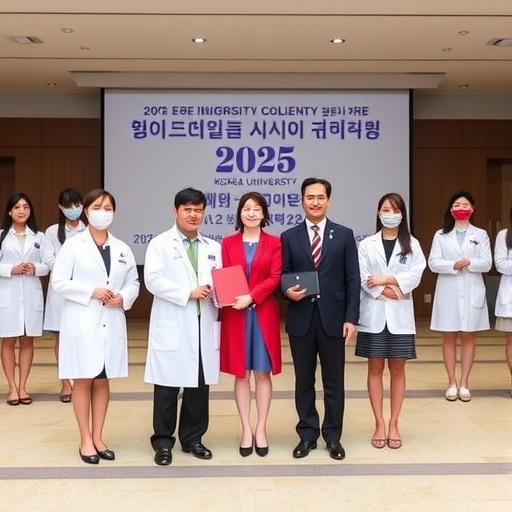In a groundbreaking advancement poised to transform drug safety evaluation, Cellarity, a leading clinical-stage biotech firm specializing in Cell State-Correcting therapies, has unveiled a pioneering framework for predicting drug-induced liver injury (DILI). This innovation harnesses the power of integrated multi-omics and artificial intelligence, establishing a new frontier in toxicology by markedly improving the detection of hepatotoxic risks that have long eluded traditional preclinical models.
DILI remains one of the most formidable challenges in therapeutic development, often resulting in unforeseen clinical trial failures or even withdrawal of drugs post-market launch. Conventional animal testing protocols frequently miss subtle or complex hepatotoxic signals, with studies revealing that such models fail to detect approximately half of drugs implicated in liver injury incidents. This significant gap in safety oversight has necessitated novel methodologies that provide both higher sensitivity and specificity in liver toxicity predictions.
At the heart of Cellarity’s breakthrough is “ToxPredictor,” an AI-based platform that integrates vast toxicogenomic data to predict dose-dependent DILI risks with unprecedented precision. The model is underpinned by “DILImap,” a large-scale transcriptomics library derived from primary human hepatocytes exposed to 300 diverse compounds at multiple concentrations. This dataset represents the most comprehensive toxicogenomics resource currently available, capturing intricate gene expression changes that signal the onset of hepatocellular damage and stress pathways.
The publication of these findings in Nature Communications delineates rigorous validation procedures whereby ToxPredictor demonstrated an exceptional sensitivity rate of 88% while maintaining 100% specificity in blind tests. Remarkably, this performance eclipsed over 20 existing preclinical safety models in direct head-to-head comparisons. Moreover, the platform uniquely identified hepatotoxic liabilities in several drugs that had progressed to Phase 3 clinical trials without detection by traditional animal assays, spotlighting its profound clinical relevance.
Unlike conventional single-endpoint assays, which often rely on limited markers or cellular phenotypes, the transcriptomic approach offers a multi-dimensional view of hepatocyte responses. ToxPredictor leverages this data richness to detect a wide spectrum of DILI mechanisms, including mitochondrial dysfunction, oxidative stress, immune system activation, and metabolic dysregulation. This holistic capture of cellular distress pathways informs not only the presence of toxicity but also elucidates the underlying molecular etiologies, facilitating more informed risk assessments and drug modification strategies.
This approach also holds significant promise for regulatory science, aligning with current initiatives aiming to curtail animal testing through adoption of human-relevant in vitro and in silico models. The scale and depth of the DILImap dataset empower regulators and industry scientists alike to refine safety margins, better prioritize candidates for development, and enhance patient safety through early, mechanistically informed screening.
Beyond detection, ToxPredictor also offers insights into hepatotoxic pathway dynamics, enabling differentiation between cytotoxic and non-cytotoxic mechanisms that often exhibit distinct transcriptomic signatures. This granularity is critical, as some forms of liver injury manifest in the absence of overt cell death but nonetheless pose substantial clinical risks. The model’s sensitivity to such subtle toxic signals fills a glaring void left by existing 3D culture assays and other phenotypic screening formats.
A major stride in democratizing this technology comes with Cellarity’s open-source release of both the AI model and the supporting validation datasets. By making these resources publicly accessible, Cellarity fosters collaborative efforts to advance drug safety science globally, inviting external researchers and pharmaceutical developers to leverage and expand upon this powerful tool. This openness heralds a potential paradigm shift in how hepatotoxic risk is assessed and mitigated across the drug development lifecycle.
Cellarity’s platform emerges from a visionary drug discovery philosophy rooted in correcting dysfunctional cellular states by targeting comprehensive gene regulatory networks. Their pipeline includes promising candidates like CLY-124, currently undergoing Phase 1 trials for sickle cell disease through a novel mechanism of globin switching, alongside collaborations with industry leaders such as Novo Nordisk to address metabolic disorders like steatohepatitis.
The successful melding of large-scale human transcriptomics with sophisticated machine learning in ToxPredictor exemplifies the increasing convergence of systems biology and computational modeling in biomedicine. This fusion not only enhances predictive accuracy but also opens avenues for discovering novel biomarkers and therapeutic targets, positioning Cellarity at the vanguard of next-generation drug safety assessment.
Ultimately, the development of ToxPredictor signals a critical leap forward in preclinical toxicology—offering a scalable, human-relevant, and mechanistically informed tool that stands to reduce costly late-stage failures and improve therapeutic safety. As pharmaceutical innovation increasingly leans on data-driven insights, this technology embodies the potential to reshape not just liver safety testing but the broader landscape of predictive toxicology.
Subject of Research: Not applicable
Article Title: A large-scale human toxicogenomics resource for drug-induced liver injury prediction
News Publication Date: 13-Nov-2025
Web References: 10.1038/s41467-025-65690-3
Keywords: Clinical medicine, drug-induced liver injury, toxicogenomics, predictive toxicology, artificial intelligence, machine learning, hepatotoxicity, transcriptomics
Tags: advancements in therapeutic developmentartificial intelligence in drug safetyCellarity biotech innovationDILImap transcriptomics librarydrug safety evaluationhepatotoxic risk detectionmulti-omics approaches in toxicologynovel methodologies for liver toxicitypreclinical drug testing challengespredicting drug-induced liver injurytoxicogenomic data integrationToxPredictor AI platform





